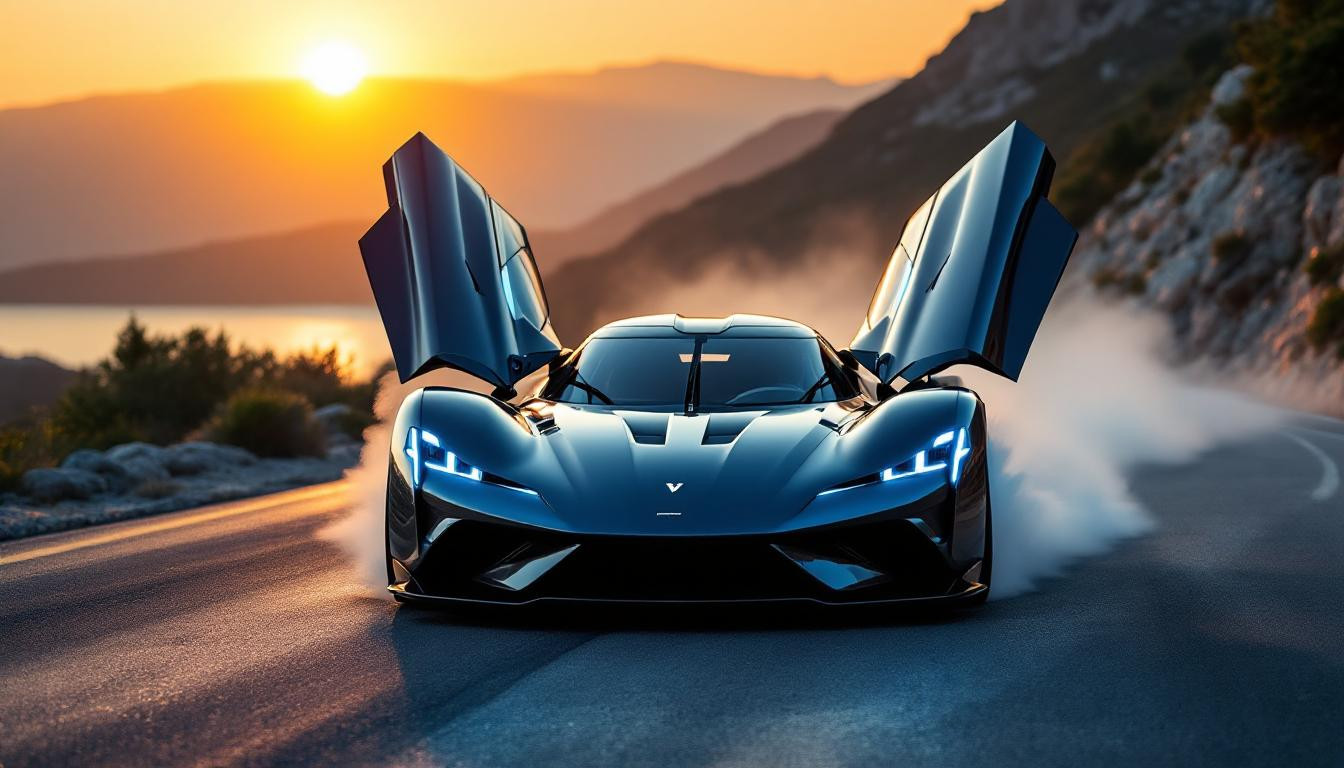The automotive world was forever changed when a small Croatian startup dared to challenge the titans of hypercars. This spring of 2025, as tree blossoms mirror the flourishing electric vehicle revolution, Rimac Automobili stands as the most compelling David versus Goliath story in modern automotive history—evolving from a garage project to Bugatti’s partner and rival.
From garage tinkerer to hypercar revolutionary
Founded by Mate Rimac in 2009, the company’s journey began with a converted BMW he called the “Green Monster.” What started as a passion project has transformed into the producer of the world’s most powerful production car—the Nevera, with its mind-bending 1,914 horsepower.
“Our plan is to show the world that Rimac is a company capable of not only producing exceptional cars but also being a technology leader in the industry,” explains Mate Rimac, whose vision has propelled the company to unprecedented heights.
Breaking performance barriers
The Nevera’s performance metrics read like science fiction rather than engineering fact:
- 0-60 mph in 1.74 seconds (quicker than traditional hybrid supercars)
- 258 mph top speed
- 340-mile range from its 120 kWh battery
These figures have forced even Bugatti to reconsider what’s possible in the automotive realm. The Nevera’s four independent electric motors deliver instantaneous torque vectoring that makes conventional traction control systems seem primitive by comparison.
The historic Bugatti merger
In 2021, the automotive world was stunned when Rimac took control of Bugatti, forming Bugatti Rimac. This union marked a pivotal moment where David didn’t just challenge Goliath—he became his business partner.
“With Rimac’s expertise in electrification, we can significantly enhance our future products,” notes Jens Schlueter, former Chief Operating Officer at Bugatti. This partnership carries special significance this spring as both brands prepare to unveil new designs for 2026.
Technological powerhouse beyond hypercars
While the Nevera captures headlines, Rimac’s influence extends far beyond its own vehicles. The company supplies electric powertrain technology to numerous manufacturers, similar to how hybrid systems are transforming mainstream vehicles.
“Rimac’s advanced battery technology is key to delivering high power density in electric vehicles,” explains Holger Stumpf, a renowned automotive engineer.
The future race: Bugatti vs Rimac
Despite their partnership, both brands maintain distinct identities. While Bugatti prepares a hybrid successor to the Chiron with a rumored V16 engine, Rimac continues pioneering all-electric performance. This friendly rivalry echoes how market trends shape automotive design.
Industry analyst Frank Wiesmann observes: “The partnership between Bugatti and Rimac is a strategic move that can significantly boost both brands in the luxury electric vehicle segment.”
What this means for automotive innovation
Rimac’s meteoric rise demonstrates how disruptive technology can reshape established industries. Like how transformative changes require breaking from tradition, Rimac has forced the automotive world to reconsider its assumptions about electric performance.
The Croatian company’s success also reveals how recognizing genuine innovation means looking beyond established players. In an industry dominated by century-old names, Rimac proved that revolutionary ideas can come from unexpected places.
As spring 2025 unfolds, the question isn’t whether electric hypercars can match their combustion counterparts—Rimac has already answered that—but rather, how much further can this technological revolution go? If history is any indication, Mate Rimac’s vision is just getting started.
